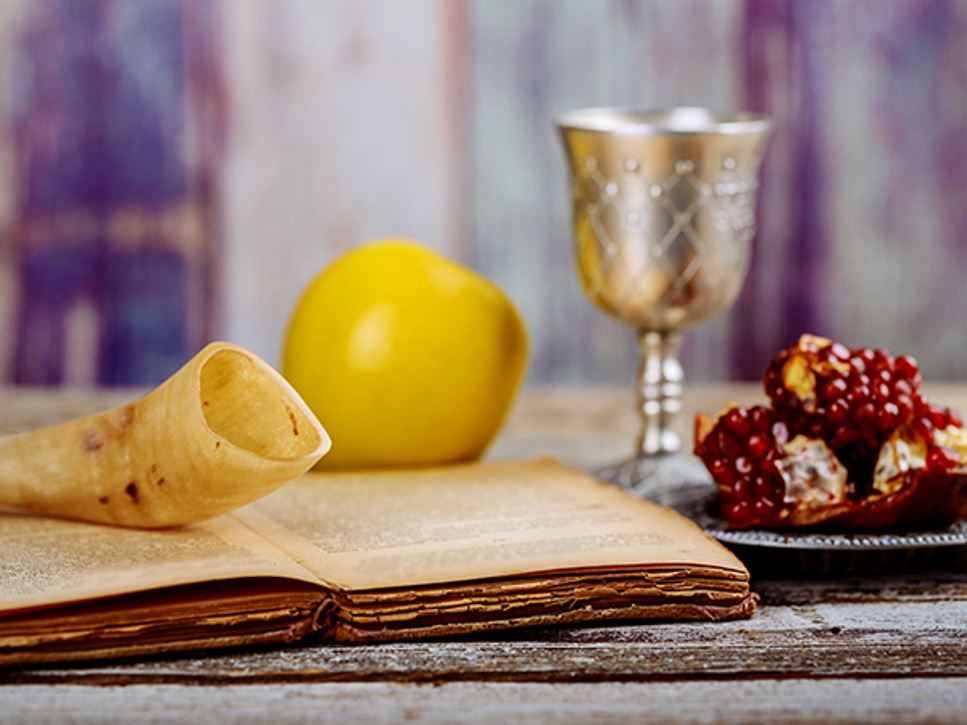Yom Kippur, known as the Day of Atonement, is a very important holiday in Judaism. Occurring on the tenth day of the month of Tishrei (or Tishri) in the Hebrew calendar, Yom Kippur falls between mid-September to mid-October. The High Holy Days (also called the Days of Awe) start with Rosh Hashanah (the Jewish New Year), which is celebrated on the first and second day of Tishrei, and end with Yom Kippur. As with all Jewish holidays, they begin at sundown the night before.
Holiday Traditions
Those who observe Yom Kippur practice t’shuvah, or repentance, during this time. According to Jewish rabbinical teachings, at Rosh Hashanah, the Books of Life of the righteous, the wicked and those in between are opened — and God decides on which book people are listed by Yom Kippur.
Since Yom Kippur is a serious time for self-reflection, it would not be appropriate to say, “Happy Yom Kippur” or “Happy Holidays.” A wish for a good or meaningful holiday is more appropriate, or g’mar chatima tovah, which means “may you be written in the Book of Life for good.” “Have an easy fast” is another considerate wish.
The Kol Nidre is chanted in synagogues on the night Yom Kippur begins. This means “all vows” and the service includes the annulment of vows made to God that were not kept in the past year. People request forgiveness from God. They also may take this time to seek reconciliation with others by asking forgiveness from people they may have harmed during the year, and grant forgiveness to one another.
Synagogue services last the full day of Yom Kippur with an afternoon break. As the focus is on spirituality, practicing Jews traditionally abstain from working; brushing teeth; wearing jewelry, makeup or leather shoes; bathing; eating and drinking; and sexual relations, as outlined in Leviticus and Numbers. This allows for focus on the meaning of the holiday. People may wear white to represent purity and the resemblance to the Orthodox Jewish burial shroud.
Remembering family members who have passed away is part of Yom Kippur. It is common to visit their graves before the holiday. People recite a memorial prayer and light yahrzeit candles before sundown to burn for the holiday. Contributions to charity, called tzedakah, are made. The end of Yom Kippur is marked with a long blast from the shofar, a ram’s horn, after which people go home to eat as an end to the fast.
Fasting for Yom Kippur
The fast includes abstaining from all food and drink and lasts from before sunset on the evening before Yom Kippur until after sunset on Yom Kippur, which is 25 hours. Adolescents may start fasting at different ages in various congregations and countries; however, those younger than 9 are discouraged from fasting.
Judaism has the principle of pikuah nefesh — saving a life — so there are exceptions for people with medical concerns. Pregnant individuals and those recently postpartum are exempt, as well as those with health conditions. For example, people with diabetes and other diseases that would be impacted by fasting should discuss their medications and fasting with their physician and registered dietitian nutritionist to determine a safe plan before the holiday. People who are permitted to eat or drink often choose to have very little when observing Yom Kippur.
In preparation for the fast, it is recommended to drink enough water the day before the fast and to limit salty or spicy foods that can result in uncomfortable thirst. People who usually consume caffeine may want to gradually cut back ahead of time for an easier adjustment during the fast.
The dinner before the fast, called the seuda mafseket, may be a light meal for some families or a large meal for others. Typical foods include chicken, fish, dumplings (kreplach), and a round challah (bread made with eggs) that contains raisins and is dipped in honey.
To break the fast, families typically gather and enjoy a variety of foods based on their family’s culture and heritage. Among the Ashkenazi (descendants of Eastern Europe) community, favorites include bagels, lox, herring and other smoked fish, cream cheese, tuna salad, egg salad, kugel (a baked noodle pudding) and challah — all of which can be prepared before Yom Kippur starts. Another option is a hearty meal with meats cooked ahead of time that are reheated. For dessert, cookies, fresh fruit, rugelach (a rich cookie made with layered flaky dough, cream cheese and filling), babka (a yeast raised sweet bread often containing chocolate or cinnamon), honey cake or sponge cake may be served.
In the Sephardic community (originally from Spain and Mediterranean regions), families may break the fast by drinking water and having a date or small snack, such as Iranian faloodeh, made with grated apples, sugar, rosewater and water. A larger meal with meats, chicken or fish would be served a little later. The recipes served vary widely among different countries; for example, harira is a Moroccan soup that may include meat or be vegetarian with chickpeas, lentils, rice, vegetables, tomatoes and spices. If the meal contains dairy foods, zom, which is a warm yogurt soup from Yemen, may be served with challah and schug (a sauce with herbs, garlic and olive oil).
References
Find a Nutrition Expert
Looking for credible nutrition information and recommendations? The Academy of Nutrition and Dietetics' network of credentialed food and nutrition practitioners are ready to help!

